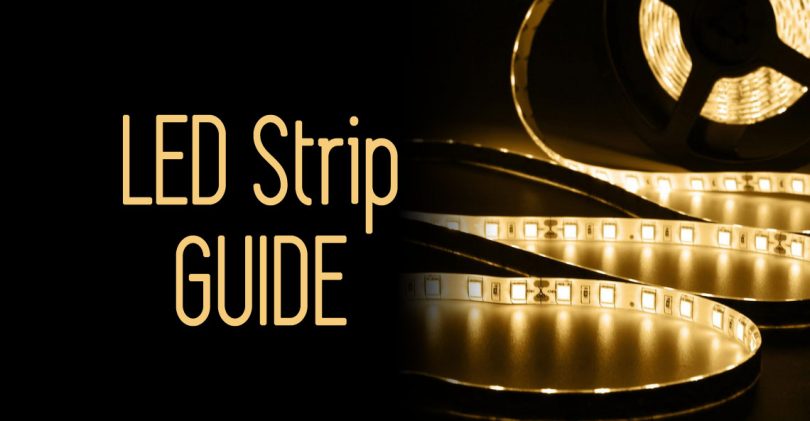Are you considering buying a led strip or led ribbon lights but are you impressed by the number of existing models and variations? Don’t know where to start? In this guide, you will find the most important aspects to consider to make the right purchase and determine which option is the best according to your needs, avoiding problems or bad results. This guide is closely related to the reading of the 5+1 determining factors in the quality of led strips to finish understanding everything it takes to hit 100% in our investment. Let’s see the points to take into account when choosing a led strip:
1 – Voltage On A Led Strip
Most LED strips work with direct voltage, typically low voltages such as 5, 12, and 24 volts, so we need an AC-DC power supply to transform alternating current (AC) to direct current (DC) and adapt the voltage to the tape’s need. There are also high voltage 220V direct current (AC) fittings that connect directly to the electric light through a controller.
Maximum lengths. The choice of voltage is essential in the decision, as the maximum length of a strip of tape depends on the voltage at which it operates; for example, an LED strip at DC12V supports a maximum length of up to 8 meters, while a strip at DC24V can connect up to 16 meters without noticing the voltage drop. For sections greater than these, both one and the other require a power amplifier so that the voltage drop is not noticed (visually, you may notice a voltage drop with a lower luminosity of the tape at the end of the section, especially in color red). An AC220V led strip has no problem running meter stretches without problems in an installation.
2 – Brightness / Efficiency In A Led Strip
Another vital aspect in choosing the type of tape is to find an optimal relationship between brightness and energy efficiency. This lighting ratio (Lm) and energy efficiency are mainly responsible for the tape’s integrated chip model. To calculate the energy efficiency of a LED strip, it is necessary to divide the number of lumens produced by the number of Wattis required for its operation.
3 – Chip Led
Multiple types of chips are used in manufacturing a led strip; in addition to affecting the power/efficiency ratio, their design and size also affect the luminous flux. The acronym SMD (Surface Mount Device) mentions that the chips are mounted directly on the board’s surface, and the numbers determine the size of the LED; for example, the SMD5050 measures 5.0mm x 5.0mm, while the SMD3528 measures 3.5 x 2.8 mm respectively. The biggest LED is not always the brightest as it also influences the technology used in manufacturing.
When selecting the chip, it is essential to know how to choose the type of chip and be satisfied with what you need to avoid paying too much or being short. For example, a low-power chip such as the SMD3528 would be sufficient for lighting shelves, stairs or window frames, or paintings. At the same time, if we require more luminosity for led lighting high ceilings or any other type of decoration, we can opt for the chip. SMD5050 are large-size chips with extended light output allowing more brightness at a more economical cost.
4 – Leds Per Meter Of Fita
Once we have decided on the type of chip that your strip requires, depending on the parameters seen before, luminosity/efficiency, and type of light, we have to decide the density of LEDs that our strip will have.
The number of LEDs per meter affects brightness and consumption and needs one density or another depending on where you install the strip. The closer and less lighting need less density, the greater distance and amplitude requires more power and greater density of LEDs:
30 LEDs per meter – Baseboards and suspended ceilings
60 LEDs per meter – Cafeteria counters, corridors, stairs, door, and window frames
120 LEDs per meter – High ceilings, exterior lighting, signage, etc.

